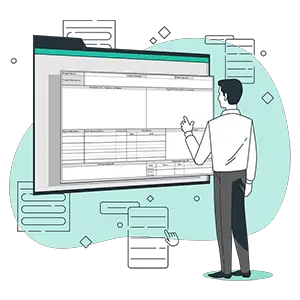
Guide: Project Charter
A project charter is a crucial document that outlines the purpose, scope, objectives, and stakeholders of a project. It serves as an official authorization of the project, providing a clear direction and framework for the project team.
Author: Daniel Croft
Daniel Croft is an experienced continuous improvement manager with a Lean Six Sigma Black Belt and a Bachelor's degree in Business Management. With more than ten years of experience applying his skills across various industries, Daniel specializes in optimizing processes and improving efficiency. His approach combines practical experience with a deep understanding of business fundamentals to drive meaningful change.
×

 A Project charter is an important document that forms the basis of a contract between the project team and higher management, or a project sponsor. It creates the initial understanding of the project and sets the stage for its management and assessment. By outlining the scope, objectives, and individuals or groups involved, it creates the project blueprint. This blueprint is not just a plan but also a guide for navigating the project through its life cycle.
A Project charter is an important document that forms the basis of a contract between the project team and higher management, or a project sponsor. It creates the initial understanding of the project and sets the stage for its management and assessment. By outlining the scope, objectives, and individuals or groups involved, it creates the project blueprint. This blueprint is not just a plan but also a guide for navigating the project through its life cycle.




 The timeline sets out the project’s lifespan with key milestones marked. This gives everyone a clear idea of the project’s progress and helps keep the team on track. Each milestone should represent a significant achievement in the project, acting as a checkpoint for evaluating progress.
The timeline sets out the project’s lifespan with key milestones marked. This gives everyone a clear idea of the project’s progress and helps keep the team on track. Each milestone should represent a significant achievement in the project, acting as a checkpoint for evaluating progress. This final section is where key stakeholders give their formal approval for the project to proceed. It’s a critical step, as it signifies that the project has been reviewed and is supported by the necessary authorities within the organization. This endorsement is essential for the project manager to have the mandate to allocate resources and direct the project’s course.
This final section is where key stakeholders give their formal approval for the project to proceed. It’s a critical step, as it signifies that the project has been reviewed and is supported by the necessary authorities within the organization. This endorsement is essential for the project manager to have the mandate to allocate resources and direct the project’s course.




 Once all parties are satisfied, the key stakeholders should formally endorse the charter. This might be through a signature, an email approval, or a formal sign-off in a meeting.
Once all parties are satisfied, the key stakeholders should formally endorse the charter. This might be through a signature, an email approval, or a formal sign-off in a meeting.




